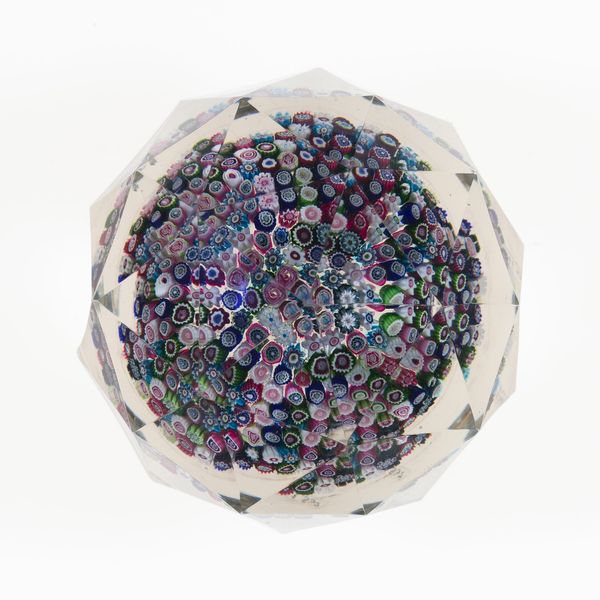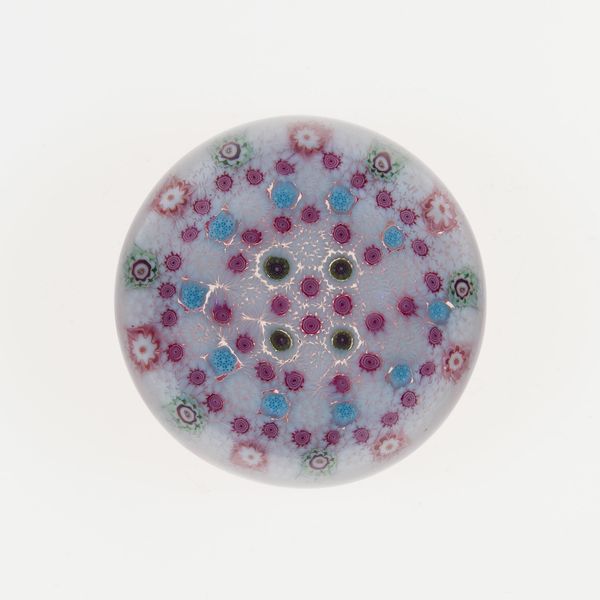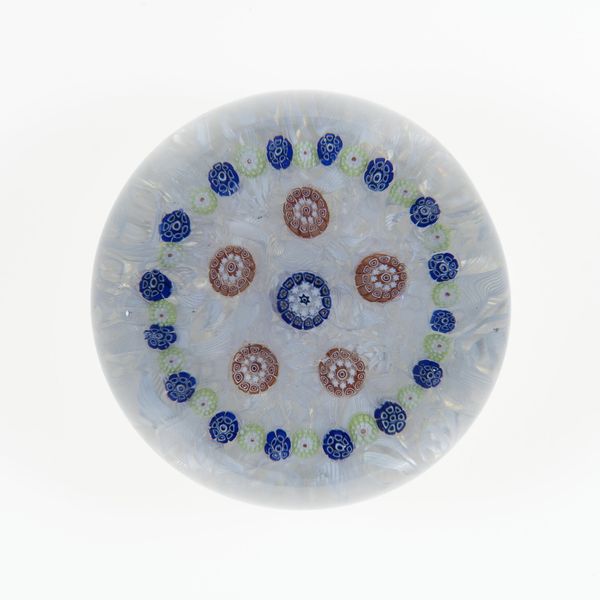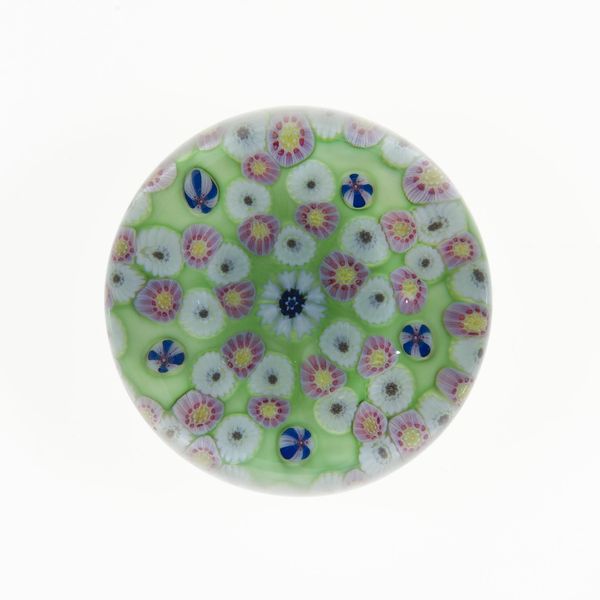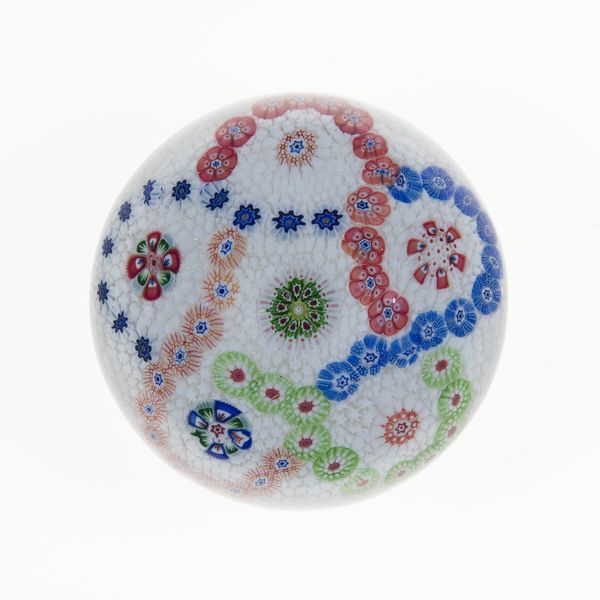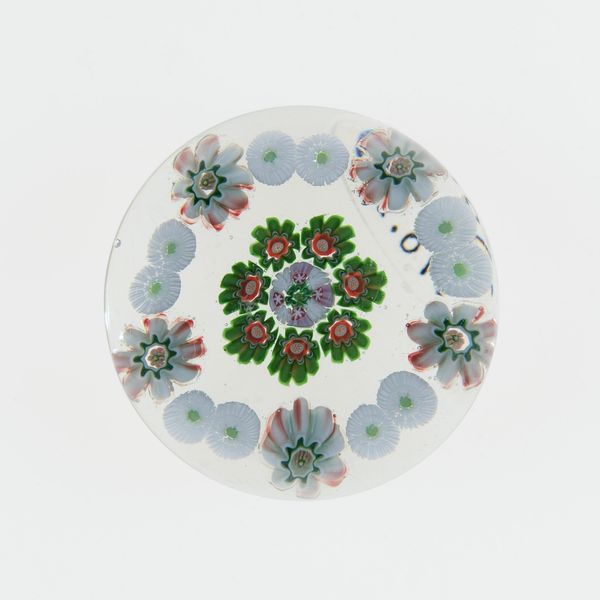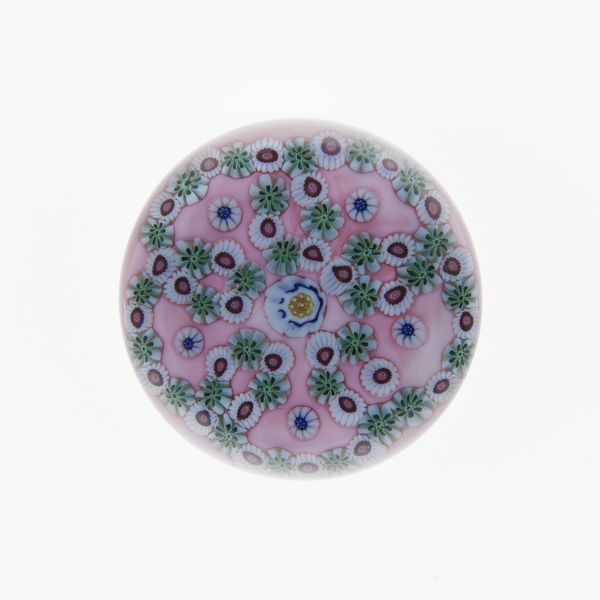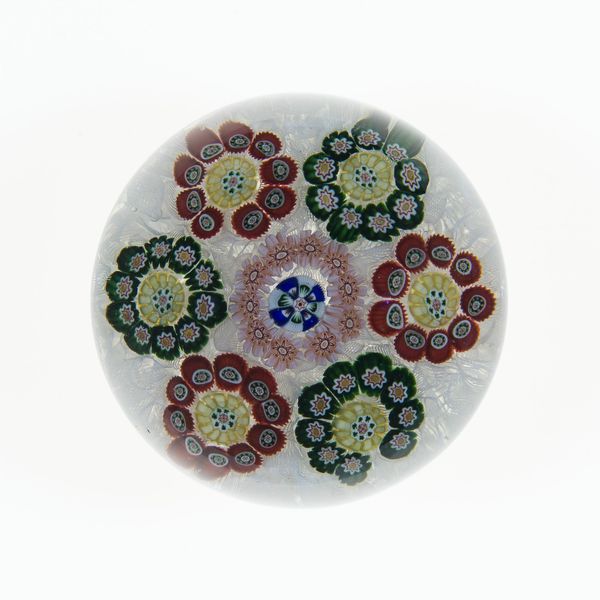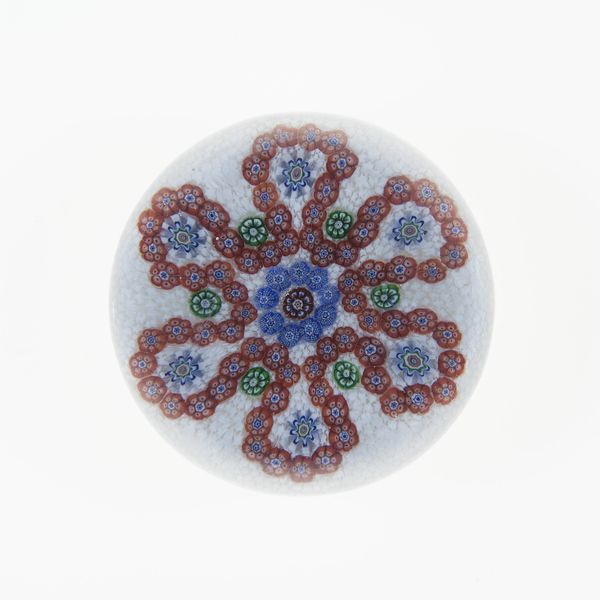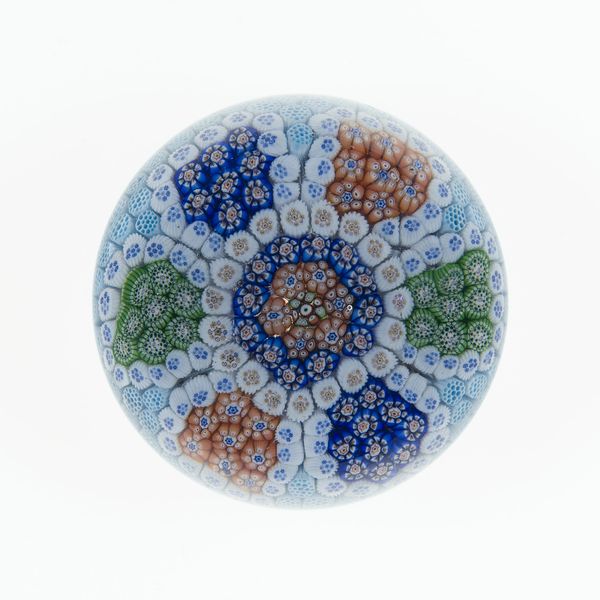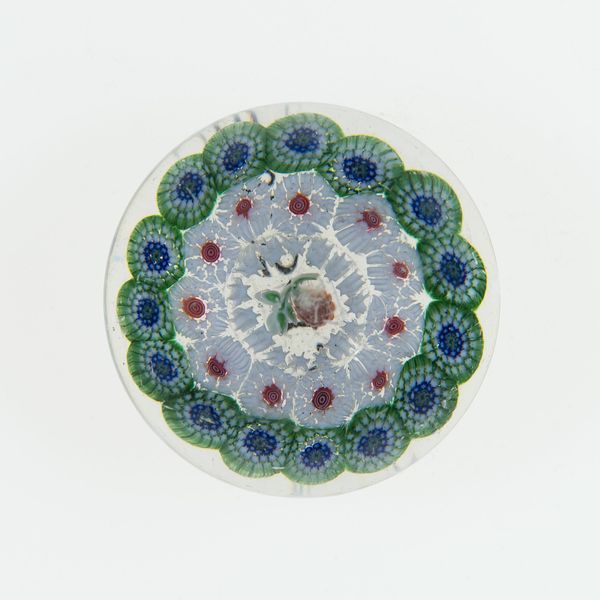
paper, glass
#
round design
#
paper
#
glass
#
minimal pattern
#
organic pattern
#
flower pattern
#
france
#
decorative-art
Dimensions: Diam. 9.5 cm (3 3/4 in.)
Copyright: Public Domain
Editor: Here we have a beautiful glass paperweight, created by the Clichy Glasshouse sometime between 1845 and 1860. The little floral design encased inside really gives it a jewel-like quality. What significance do you see in the choice of these embedded flower forms? Curator: This seemingly simple object holds a fascinating depth. Consider the Victorian era, when this was created. Flowers weren't just pretty; they were imbued with meaning. Specific blooms communicated sentiments in a coded language. Roses meant love, daisies innocence, and so on. Editor: So you think this might be a symbolic bouquet frozen in glass? Curator: Possibly! The act of preserving these tiny blossoms also speaks volumes. It is like capturing fleeting beauty, attempting to hold onto a moment in time, much like a memory. This resonates deeply with Victorian mourning practices and their fascination with mementos. And the glass itself… transparent yet solid…it both reveals and protects. Editor: It’s interesting how the function – holding down paper – seems secondary to all of these layered meanings. Curator: Precisely. Everyday objects become vessels for profound emotional and cultural weight. Each little flower then operates as a signifier within a system of established values. It gives a coded representation of larger societal structures of memory and meaning. Editor: That definitely changes how I see it! From just a pretty object to a tiny time capsule filled with cultural meaning. Curator: Exactly! And isn't that the most rewarding part of looking at art, finding those hidden layers?
Comments
No comments
Be the first to comment and join the conversation on the ultimate creative platform.
